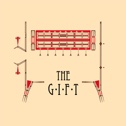Click the logo to go to
The Gift homepage
Sun Dancing
In times of utter distress or unbounded aspiration, a person might solemnly vow to dance at the next Wiwanyang Wachipi. There the dancer prayerfully sacrifices to fulfill the promise. “The Sun Dance was,” according to Red Bird, “our first and only religion. We believed that there was a mysterious power greater than all others, which is represented by nature, one form of representation being the sun.” Arthur Amiotte believes “the total epistemology of the people is evident in the Sun Dance and its structures.”
According to Black Elk, Kablaya learned the ceremony through a vision “many, many winters after our people received the sacred pipe.” His vision called for Lakotans to gather annually for a Sun Dance, and to organize their lodges into an expansive formal circle during a mid-summer full moon. In a sacred manner, a cottonwood tree was scouted, harvested and carried to the center of the camp circle. There its lower branches were removed, its trunk was painted, and certain objects were fastened to it. Dancers tied their ropes and offerings to the tree, which was then raised upright in a prepared hole. Thus, the center of the universe was re-established and earth and sky were connected.
Other structures include a concentric shade arbor at a prescribed distance from the tree, two or more initis, a rest area for the Sun Dancers, and a special lodge for the Sun Dance leader. These, and all other elements, according to Little Wound, American Horse and Lone Star, are organized “relative to the Gods.”
Amiotte, Arthur. The Lakota Sun Dance: Historical and Contemporary Perspectives. In Sioux Indian Religion (DeMallie, Raymond J. and Parks, Douglas R., eds.), 75-89. Norman, University of Oklahoma Press, 1987.
Black Elk. Wiwanyag Wachipi: The Sun Dance. In The Sacred Pipe: Black Elk’s Account of the Seven Rites of the Oglala Sioux (Brown, Joseph E., ed.), 67-100. Norman: University of Oklahoma Press, 1953, 1989.
Little Wound, American Horse and Lone Star. The Holy Men Tell of the Sun Dance. In Walker, James R., Lakota Belief and Ritual (DeMallie, Raymond J. and Jahner, Elaine A., eds.), 181-182. Lincoln: University of Nebraska Press, 1980, 1991.
Red Bird. The Sun Dance. In Densmore, Frances, Teton Sioux Music, 84-86. New York: DeCapo Press, 1972, reprinted from 1918.
Curriculum
